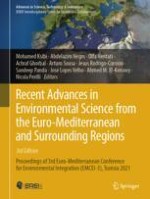2024 | OriginalPaper | Buchkapitel
A Renewable Cellulose Source: Isolation and Characterization of Cellulose Microfibers from Pea Pod Waste
verfasst von : Fatma Bhiri, Samira Abidi, Amir Bouallegue, Gmar Bensidhom, Fatma Kallel
Erschienen in: Recent Advances in Environmental Science from the Euro-Mediterranean and Surrounding Regions (3rd Edition)
Verlag: Springer Nature Switzerland
Aktivieren Sie unsere intelligente Suche, um passende Fachinhalte oder Patente zu finden.
Wählen Sie Textabschnitte aus um mit Künstlicher Intelligenz passenden Patente zu finden. powered by
Markieren Sie Textabschnitte, um KI-gestützt weitere passende Inhalte zu finden. powered by
